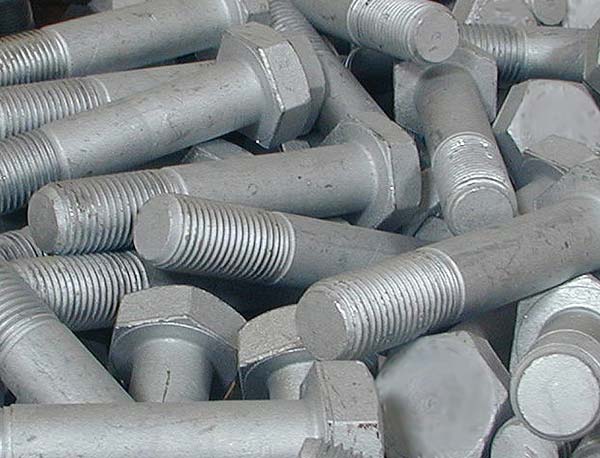
Hot dip galvanizing, due to his efficacy, is largely used to protect fasteners from oxidation.
The procedure consists in submerging the metal parts to be treated in a bath of molten zinc at a temperature of around 450 °C. Chemical products assure an adequate adherence of the zinc to the metal surface inhibiting the oxidation reactions during the process.
The strong thickness of coating applied (around 50 µm) and the firm adhesion to the material guarantees tough and abrasion-resistant, longterm corrosion protection to steel. Also in particularly aggressive environments and without the costs of production of the stainless steel.
Analogously to zinc plating processes, hot dip galvanizing provides protection in two ways.
First of all, zinc creates a robust metallic barrier that does not allow corrosive agents to contact the steel.
The greater the thickness of coatings, the greater the resistance to abrasion and corrosion.
Secondly, as the physical barrier could get damaged by scratches and corrosion, zinc provides a powerful second shielding mechanism by means of cathodic protection.
That is to say, also when the surface coating is damaged, the steel is still galvanically protected by the sacrificial corrosion of the zinc coating adjacent.
Even though all coatings are designed to provide a barrier protection, zinc is the only coating able to ensure a dual protection to steel.
An aspect to be considered is the correlation between the thickness of coatings and tolerances for measures of threaded parts.
Zinc galvanizing increases the diameter of threads proportionally to his thickness. This issue, if not taken into account, can affect the coupling screw-nut.
To fix this problem two different methods can be applied. The first method, that is the most common, consist
in using nuts with an increased thread. The second one, instead, consists in using bolts with the undersize thread.